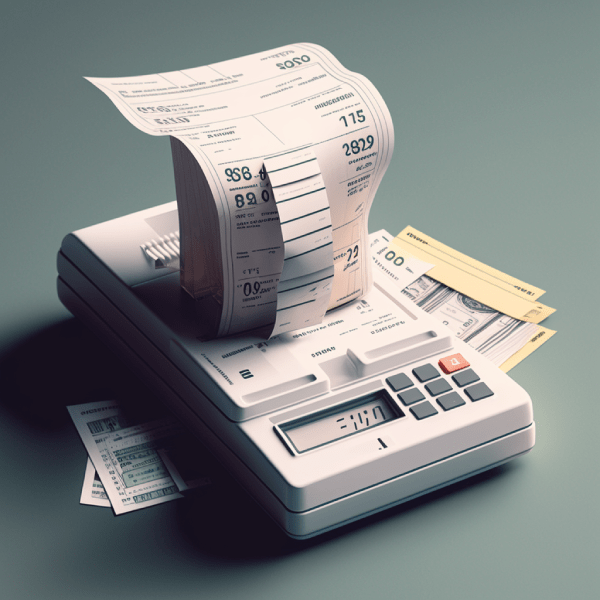An invoice is a document that certifies the occurrence of an economic transaction and is a basic document used in accounting. Invoicing in Estonia can only be done by legal entities and sole proprietors, natural persons must use a contract.
The Estonian Accounting Act describes the information which must be present on an invoice as well as the format of an invoice while the Estonian Commercial Code states that businesses have the obligation to mark the name of their business, location, and registry number on business documents.
It is also important to acknowledge that additional requirements arise if your business is VAT registered.
In this article, we will shed some light into how invoicing in Estonia works. Incorporate is ready to help you! P
Please feel free to reach out to us if you would like to get more information about any of our company formation & management services or accounting services.
Invoicing with your Estonian company
When it comes to issuing an invoice with your Estonian company, the very first thing you need to keep in mind is whether your business is VAT registered or not.
In case your business is not VAT registered and does not have a VAT number, you cannot add one. On the other hand, being VAT registered does not mean that you must always include VAT to your invoices as it is also dependent on what types of goods and/or services you sell and the partner/customer that you are issuing your invoice to.
If your business is VAT registered
As mentioned above, you can only include your business’ VAT number on invoices in case your business has one and the need to include it depends on your area of activity and the location of the partner/customer you are issuing the invoice to.
Moreover, the Estonian VAT Act states that a VAT liable business must issue an invoice within 7 days after the products have been shipped out or the service has been performed. The only exception here is when products or services are sold to a third party on a regular basis. In such cases invoices are issued once a month.
If your business is registered for VAT in Estonia, you must issue an invoice according to the Estonian VAT Act if:
- revenue was generated in Estonia;
- revenue was generated in a non-EU country;
- goods or services subject to taxation in the recipient’s EU Member State are transferred to a taxable person or a limited taxable person of another Member State, and the recipient has not issued himself an invoice for the transaction.
Information required on a VAT invoice
VAT invoicing in Estonia is quite straightforward as according to Section 37 of the Estonian VAT Act, an invoice must contain the following:
- the serial number and the date of issuance of the invoice;
- your business’ name, address, and VAT number;
- customer’s name, address, and VAT registration number (in case the customer has a VAT number and is liable during the purchase);
- name and description of the transacted goods or services;
- quantity of the items or the volume of service;
- date of the transaction or payment (if not the same as the invoice date);
- the price of goods or services excluding VAT and a discount if it is not included in the price;
- taxable amount by VAT rates with rates or tax-free turnover amount;
- amount of VAT due in Euros.
It is also good practice to add your business’ phone, email address and bank account number on your invoices.
Issuing a simplified VAT invoice
According to the Estonian VAT Act, it is also possible to issue a simplified VAT invoice if your business provides transportation services or your business uses automatic payment terminals. The important fact here is that you can only issue a simplified receipt for transactions that do not surpass €160 excluding VAT.
A simplified VAT invoice must contain the following:
- date of issue;
- business’ name and VAT ID.;
- type of goods or services supplied;
- taxable amount;
- VAT payable.
Self-billing in Estonia
Invoicing in Estonia can also be done by the purchaser of the goods or the recipient of a service instead of a taxable person or a foreign taxable person using self-billing. However, self-billing can only be used in cases where both parties have agreed upon it beforehand in writing since the seller is also obligated to keep records of their turnover in the form of invoices.
Self-billing is especially useful in cases where the buyer has exact information about the contents and the details of the transaction. When issuing such invoices, the phrase “Self-Billing” must be used to differentiate them from other invoices.
Your business is not VAT registered
The minimum requirements of a VAT-free invoice dictate that it must at least contain information about the transaction, date of the transaction, quantity, and price of products and/or services and the total price.
However, in case you are issuing an invoice to a business, you should also add the serial number of the invoice, legal name, address, and the registry number of both parties. Issuing an invoice to a natural person is not obligatory except when they specifically ask for an invoice.
There is no direct time limit for issuing a VAT-free invoice, but the normal claim that arises from a transaction expires in three years. This means that there might be a situation where an invoice is sent, for example, for the previous year, when a product or service was sold, and there is also an obligation to pay for it.
Managing your invoices and invoice templates
Any sales invoice issued should not be in Word, Excel or image format, event if you prepare your invoices in one of these programs. All issued invoices must be converted into PDF formats before issuing and storing.
In general, it is most practical to manage everything related to your invoices on a cloud-based accounting program nowadays. Practice shows that most mistakes are made when invoices are prepared manually, besides, manual preparation can be very time-consuming.
Using a specialised program is very convenient and streamlines most processes because most lines on the invoice are generated automatically from the data within your software and you do not need to enter much manually. Secondly, in various programs, you can immediately monitor payments, as well as send reminders to customers who have not paid their invoices, etc.
At the same time, we understand that sometimes a business really does not need a specialized accounting software as the number of transactions is low thus the accounting is not too complicated.
That is also why we have created a template which you can use to issue your invoices.
Download Incorporate’s invoice template here (PDF file).
Incorporate has the accounting expertise
Invoicing in Estonia can be difficult as professional knowledge of accounting and a good understanding of your business is needed as requirements can change depending on your field of activity.
Incorporate’s accountants have extensive experience in dealing with Estonian businesses that have clients across the world. If you would like to have your accounting done correctly, please feel free to reach out to us!



